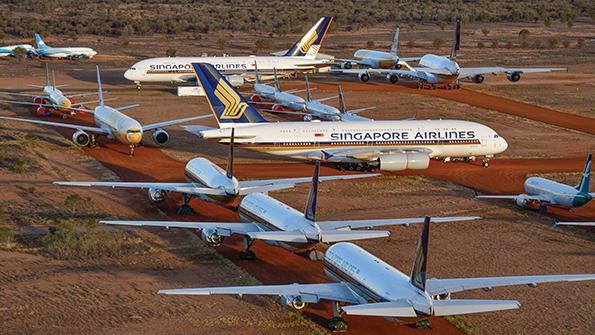
Over the last few months, the industry has taken some consolation from developments in the U.S.
Demand for air travel there has come back much faster than in other regions. While international flying is still largely curtailed because of continuing travel restrictions, the U.S. domestic market is doing quite well. In June, capacity was down just 12% compared with 2019, and that gap is forecast—based on airline schedules—to shrink further over the next quarter.
The optimism has also touched off a few significant aircraft orders. United Airlines ordered 270 narrowbodies from Boeing and Airbus, while Southwest Airlines boosted its 737 MAX orderbook to replace the 737-700 fleet. And even Porter Airlines, grounded since March 2020 and facing Canada’s particularly tight travel restrictions—still in place until August—has now revealed ambitious plans to grow based on a large order for Embraer 195-E2s.
However, what tends to be forgotten from an industry point of view is that North America is not the problem. And neither is Europe, which is still lagging behind the U.S. in the return of traffic and could see stalled passenger flows after summer vacations. At least COVID-19 vaccination campaigns across the European continent have gained momentum and are showing positive effects, even as the more transmissible Delta variant of COVID-19 has now become dominant.
The real problem for both airlines and their suppliers is the situation in Asia, where an unfortunate combination of factors is at work: Vaccination rates are either low or very low, while restrictions on international flying remain largely in place.
At the same time, the Asia-Pacific region represents 37% of Airbus’ firm order backlog and 31% of Boeing’s, according to Bernstein Research data. North America constitutes just 16% and 18%, respectively. Unless a sudden and unexpected recovery takes place, a substantial share of those backlogs may be at risk.
Many analysts and the International Air Transport Association have pointed to the situation in China. As Bernstein Research analyst Douglas Harned writes in a recent study, Chinese domestic capacity surpassed 2019 levels for the first time in September 2020 and stayed in growth mode with the exception of February 2021, when the government discouraged travel during the Chinese New Year holiday period. That is obviously great news for everyone involved.
But Asia-to-Asia capacity, excluding domestic China, is a different story. It was down 73.6% in April 2020, and while the decline has temporarily contracted, it was back at 72% below 2019 levels in June of this year and at 69% in July. Harned does not expect China to open its borders in any significant way before the February 2022 Winter Olympics.
Capacity for Asia-to-Asia traffic is expected to be 54.4% lower than 2019 levels in August 2021 and just 46.9% in September, based on filed schedules. But these projections are to be taken with significant caution. As Harned notes, the experience during the pandemic so far has been that filed schedules do not translate into actual levels of flying—in other words, the closer airlines get to scheduled times of departure, the more capacity they are taking out.
The situation is no different for long-haul markets to and from Asia, with declines in June 2021 for Europe-to-Asia capacity still at almost 66% and at 77% in the Asia-to-North America segment. Plus North America-to-Europe travel is still down 71%. Load factors are yet another sad story.
The current traffic levels and absence of a recovery in what was about to become the most important market segment will translate into a slower pace of aircraft deliveries. Asian airlines are already highly in debt, and while many have received government bailouts, at least part of the money has to be paid back. It is unclear to what extent governments can or want to provide further financial support.
The effects will be felt particularly in the widebody field, according to Bernstein Research. Harned forecasts that Airbus will reach 2019 narrowbody delivery volumes by 2024 and exceed them by 2025. Boeing will surpass 2018 narrowbody output by 2022, with the 2019 numbers skewed because of the 737 MAX grounding.
For widebodies, it’s a different story: Airbus delivered 173 aircraft in 2019 and will hand over only 116 in 2025, according to the forecast. Boeing delivered 254 aircraft two years ago and will send off 178 in 2025. That represents 67% and 70% of precrisis levels, respectively. The outlook differs by model. Airbus will still deliver only 26 A330neos in 2025 but also 88 A350s, according to the Bernstein analysis. On the Boeing side, the company will deliver 96 787 aircraft and 36 777Xs.





